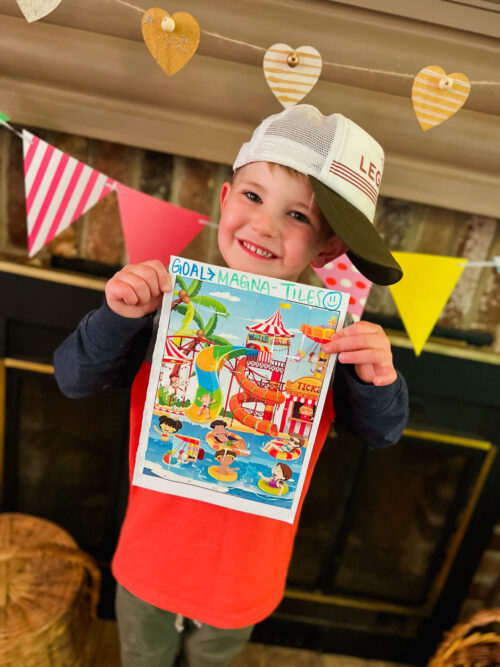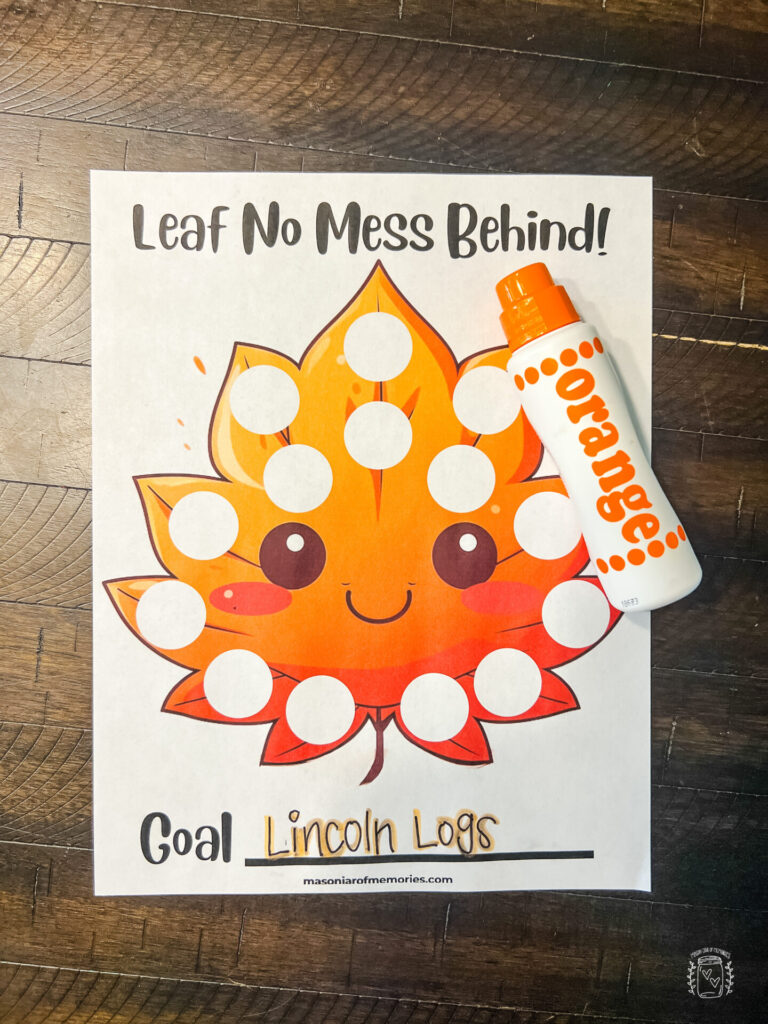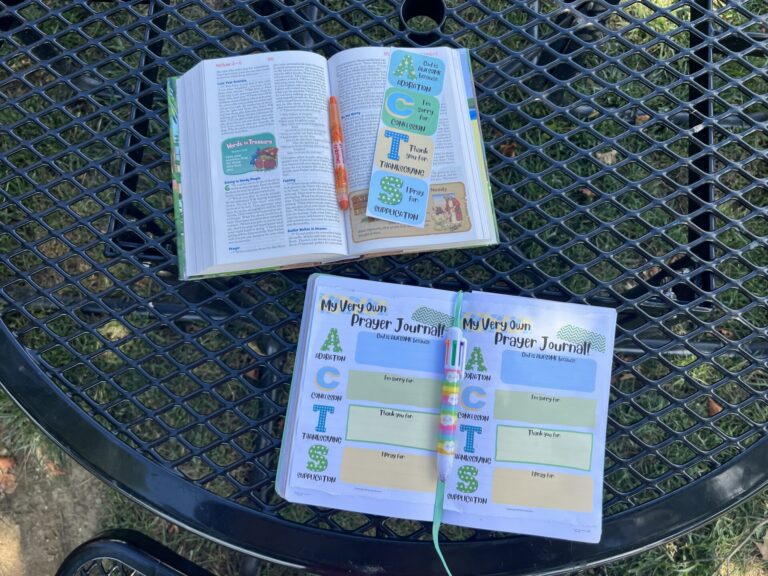Teaching Young Children the Value of Strong Work Ethics and Goal Setting
As parents, we share a common desire to raise responsible adults with strong work ethics. We want nothing more than for our children to pursue their dreams, achieve personal goals, and persevere during challenging times. To achieve this valuable life lesson we can help them set and work toward achievable goals. By doing so, we can help foster a sense of accomplishment, responsibility, and perseverance in their young minds.
The Perfect Tool: Sticker Puzzles!
At a garage sale, I stumbled upon the perfect tool for setting goals with my 4-year-old son: a Carnival Sticker Puzzles book with 4 puzzles. Each puzzle consists of two pages – one with 48 scrambled, numbered square stickers, and another with a 48-square grid. By matching each numbered sticker to its corresponding number on the grid sheet, children are able to complete the mystery picture. This tool is especially good for children who may not yet grasp the concepts of time and money and allows the opportunity to practice ordering and matching numbers while honing in on fine motor skills.
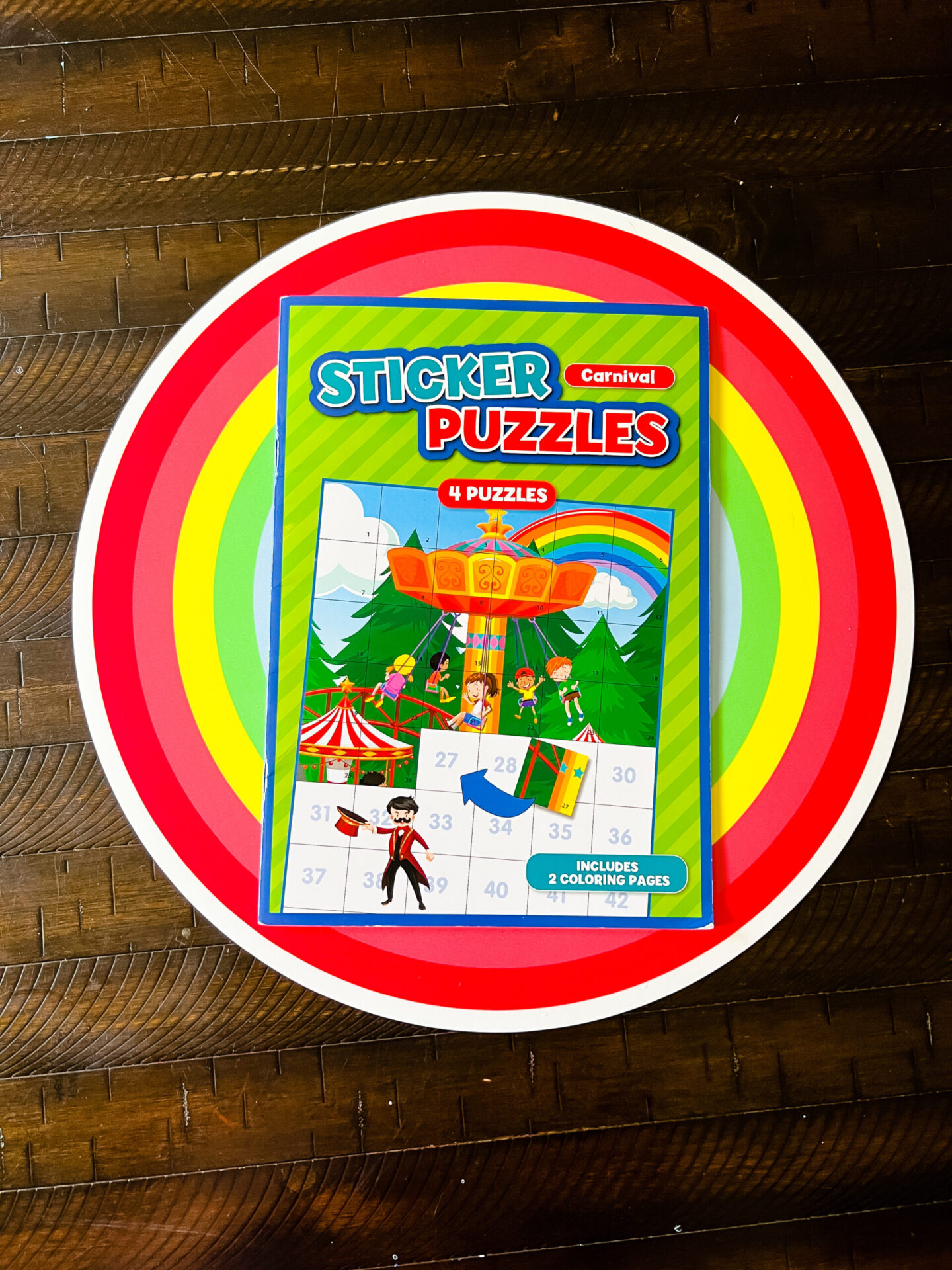
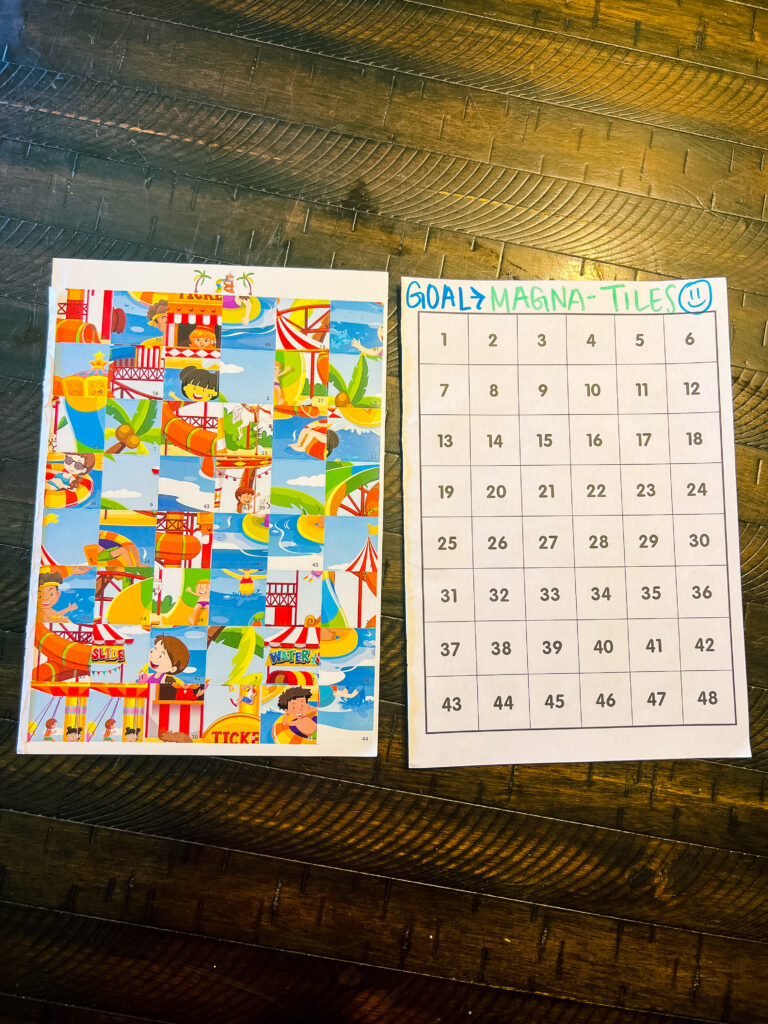
My son is an avid Magna-Tile builder and wanted to build taller towers, so I decided to introduce him to the concept of earning a reward for hard work. I showed him the sticker book and explained how we would use it to track his progress. Once he completes the puzzle, he will earn a new set of Manga-Tiles. By introducing him to the grid and the concept of working toward a goal he is learning the value of hard work and perseverance.
Starting chores at an early age can have many benefits. Kids are more open to the idea of chores and see them as fun and exciting, which we all know tends to disappear in later years. This is a great opportunity to model working hard and for each chore to be done with excellence. These skills have the power to reflect into other aspects of life such as education, sports, hobbies, relationships, and even future careers.
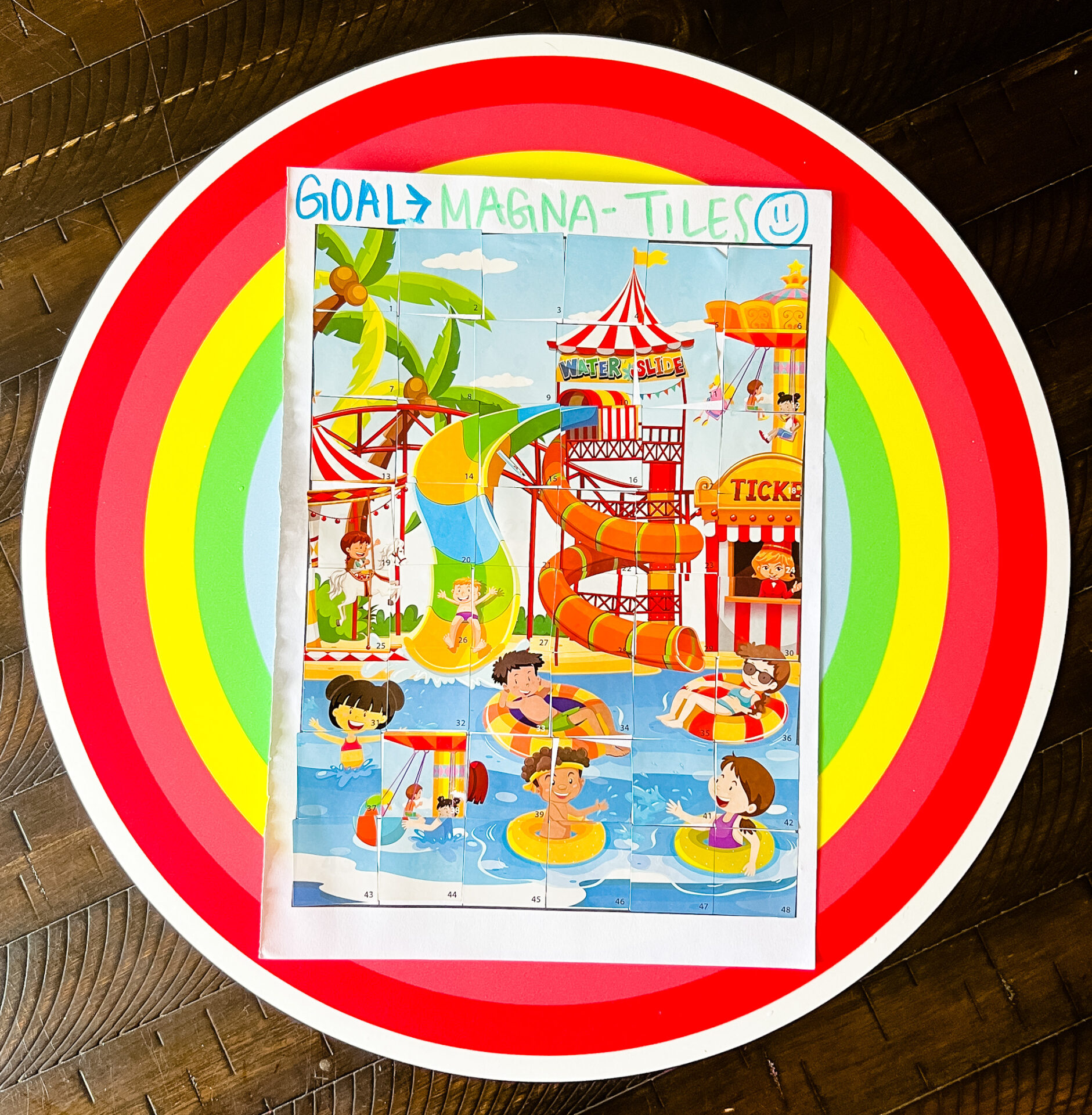
Implementing the Sticker Book System At Home
To best implement the sticker puzzle system in your home, it is important to choose age-appropriate tasks, set realistic goals, and provide consistent, positive feedback. After each chore, take a minute or two to check the quality of service and offer help when needed. Adding a sticker can be a great way to chunk chores into manageable portions and provide a quick reward for motivation.
To give your child a sense of ownership and autonomy in the process, allow them to explore what jobs need to be done around the house or yard. Consider allowing them to choose when they want to complete the chores. In my case, I allowed my son to decide when and how many chores he wanted to do each day. While there were times when I would ask him if he wanted to do chores, he had full discretion to make the decision.
Remember that something that works well for one child, may be the opposite for another. Be flexible and make adjustments when needed. For some children, breaking the goal into smaller, more manageable tasks may be helpful, while others may work better from having a specific deadline to work towards. You can experiment with different types of rewards or adjust the number of stickers earned for certain tasks. This system can be used for additional chores outside of your child’s regular responsibilities. Use your creativity and make it your own for your child’s needs and learning style.
Since the sticker puzzle included 48 stickers and to make the chores age-appropriate for a preschooler, most of the tasks could be completed within 1-5 minutes. Check out the list below for chore ideas for younger children:
Indoor Chores
- Restock K-Cups
- Put trash bag in the trash can
- Help load the dishwasher
- Assist with dinner preparation
- Help bring in light groceries
- Put away clean utensils
- Scrub the counter with a baby wipe or a damp cloth
- Clear off the table for dinner
- Put all shoes on the shoe rack
- Help make beds
- Put toys away
- Dust baseboards (put a damp sock on their hand)
- Put dirty clothes in the hamper
- Sort laundry by whites and colors before washing
- Help transfer washed clothes to the dryer
- Sort and match clean socks
- Mystery 5 Minutes: Have your child follow you around and do random quick jobs for 5 minutes. (A favorite for a wing-it-style mom, such as myself)
Outdoor Chores
- Water the plants
- Collect the mail
- Feed the dog
- Taking food scraps to the compost bin
- Put yard toys away
- Pull weeds
- Pick up sticks in the yard
Research shows that children who persist and excel recognize that success comes from hard work and practice. By providing opportunities for children to try new things and supporting them along the way, we can foster persistence and excellence. Using a sticker puzzle to visually track progress and provide positive reinforcement is a great way to encourage children to develop good habits. With consistency and patience, we can help our children build a strong foundation for success in all areas of their lives.
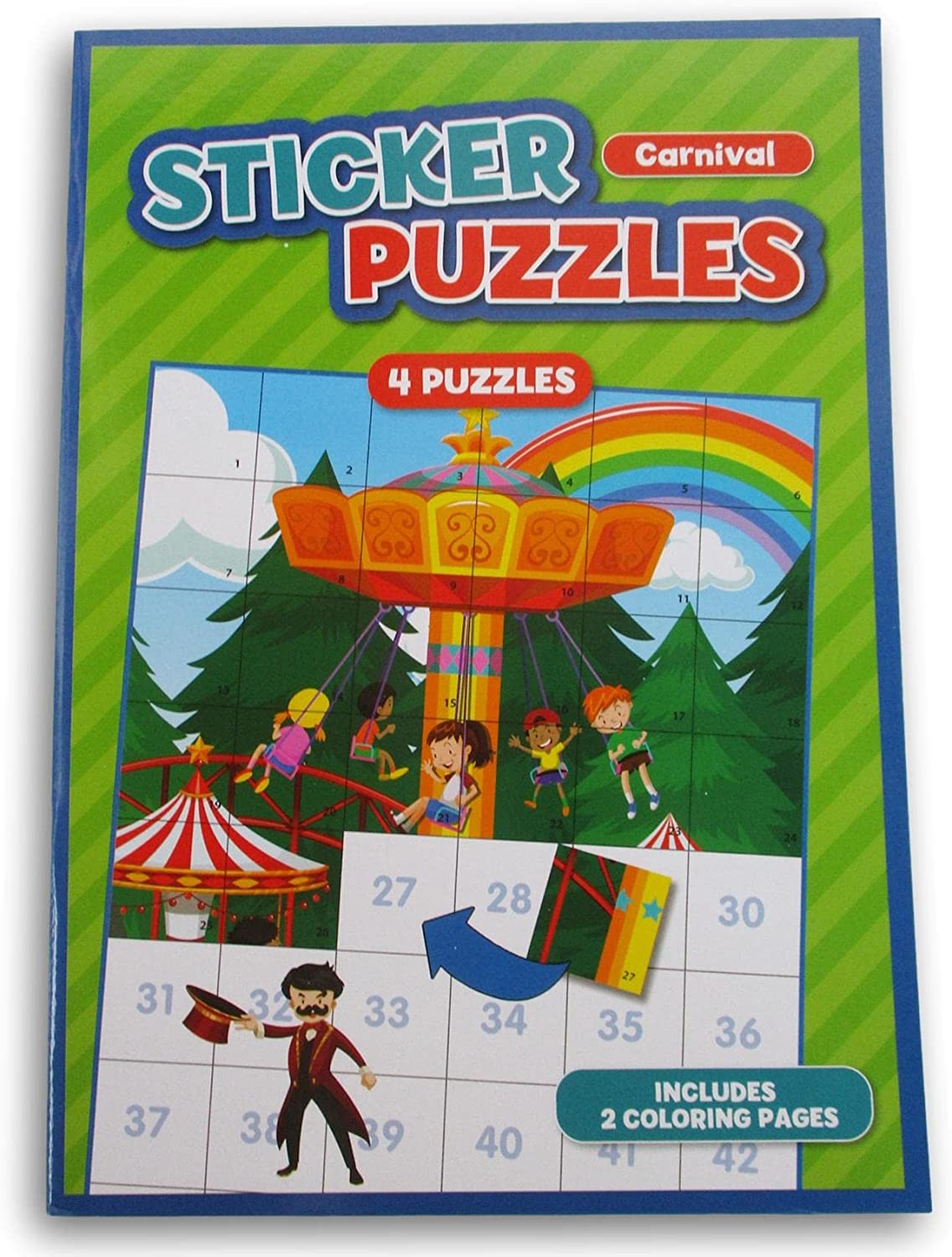
This Sticker Puzzle Book is the perfect tool for setting goals with young children. Each puzzle consists of two pages – one with 48 scrambled, numbered square stickers, and another with a 48-square grid. By matching each numbered sticker to its corresponding number on the grid sheet, children are able to complete the mystery picture. This tool is especially good for children who may not yet grasp the concepts of time and money and allows the opportunity to practice ordering and matching numbers while honing in on their fine motor skills.
Additional Creative Ways to Use The Sticker Book System
In addition to using sticker puzzles for chores, there are other creative ways to incorporate this system. Such as, parents can use a sticker puzzle to track the number of books their child reads, the number of hours spent outside each month, or the number of nights a child successfully sleeps in a big kid’s bed. Sticker puzzles can also be used to motivate and track potty training success. Ultimately, the possibilities for using sticker books are endless and can help children stay motivated and accountable while working toward their goals.

❤️Looking for ways to help your children develop strong sibling relationships? Check out Tips for Building Strong Sibling Relationships for three ways to encourage stronger connections between siblings.❤️
Disclaimer: We only endorse/link things on this page that we have personally used or come HIGHLY recommended by trusted peers. All items mentioned are bought and paid for by us. If you grab anything using our referral/affiliate links above, we may receive a small commission (at no cost to you). This enables us to provide quality content for this site and keep it up and running. Thank you.

